With each round of vAstu introductory course, we get the opportunity to unravel a new, deeper layer of learning through the experiential framework.
In our last workshop, we explored the following fundamental questions – ‘What are the different ways in which we receive knowledge? And where does the knowledge get stored to be retrieved again? While we are taught in school that knowledge is often linked to the brain and the intellect, which other parts of us get activated in the process? Yoga and vAstu seem to be activating these other parts, can we explore this further?’
After 15 minutes of sketching, the fascinating discussion that followed made us all aware and appreciate the many different parts in us that are open to imbibing knowledge everyday. The eyes and hands, a few recognized, were primary ways in which they received knowledge. ‘Besides the mind, I find my hands also store knowledge’ one of them said. Especially through working with soil, materials of different textures and craft. Others shared that their ears and feet were also receivers, though the feet were less activated.
Do our lifestyles in cities allow us spaces to connect to the earth with bare feet?- one can wonder. ‘I work in front of the computer all day. I feel my eyes and head are activated continuously while I feel no connection to my feet or other parts of the body’ one participant reflected. ‘I have compartmentalized a lot of information in my brain- all the practical information on how to manage my home, my family, my work which takes up majority of the space. Perhaps connecting with nature (Prakriti), vAstu, Yoga & other embodied knowledge streams can help me restore my connection with my body and heart.‘
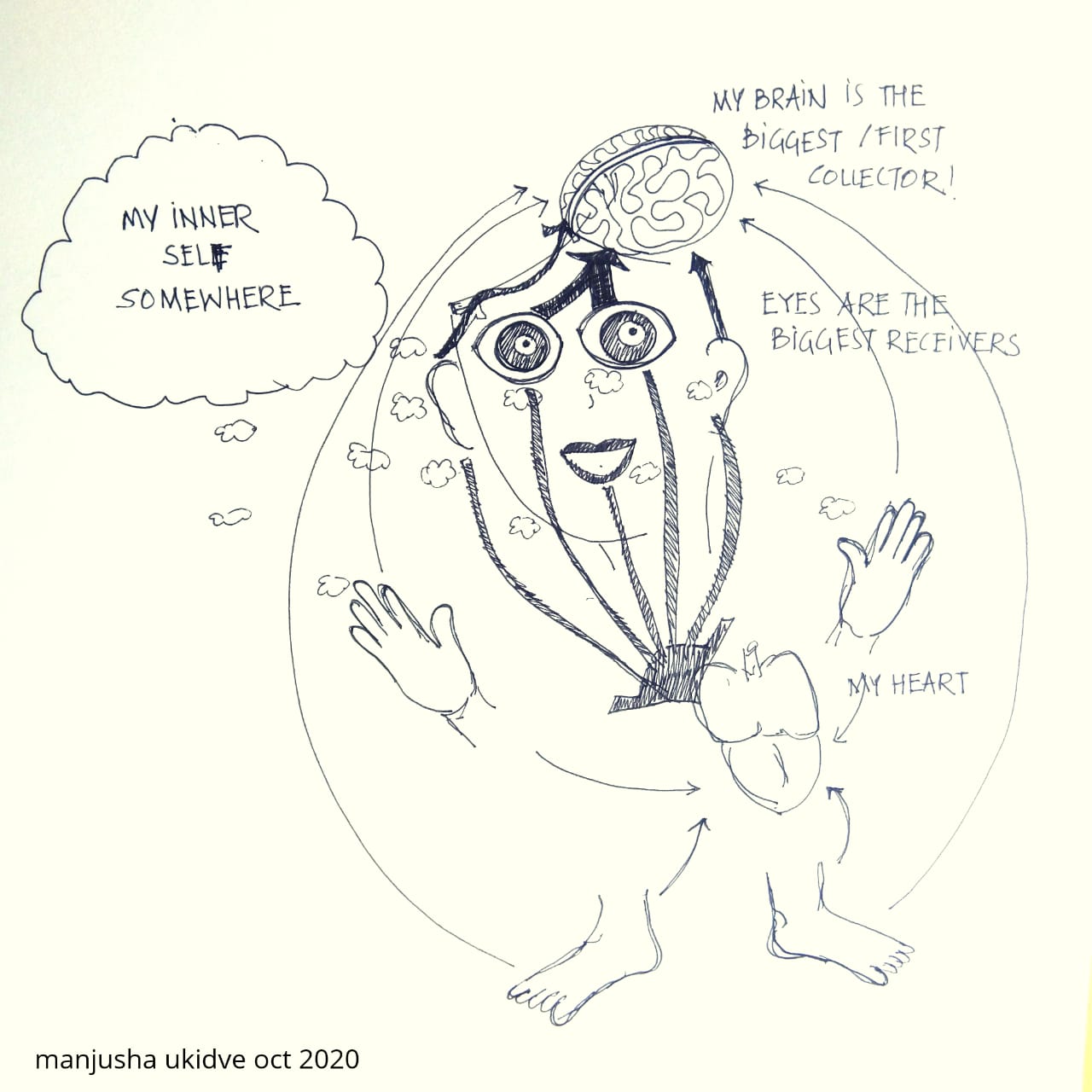
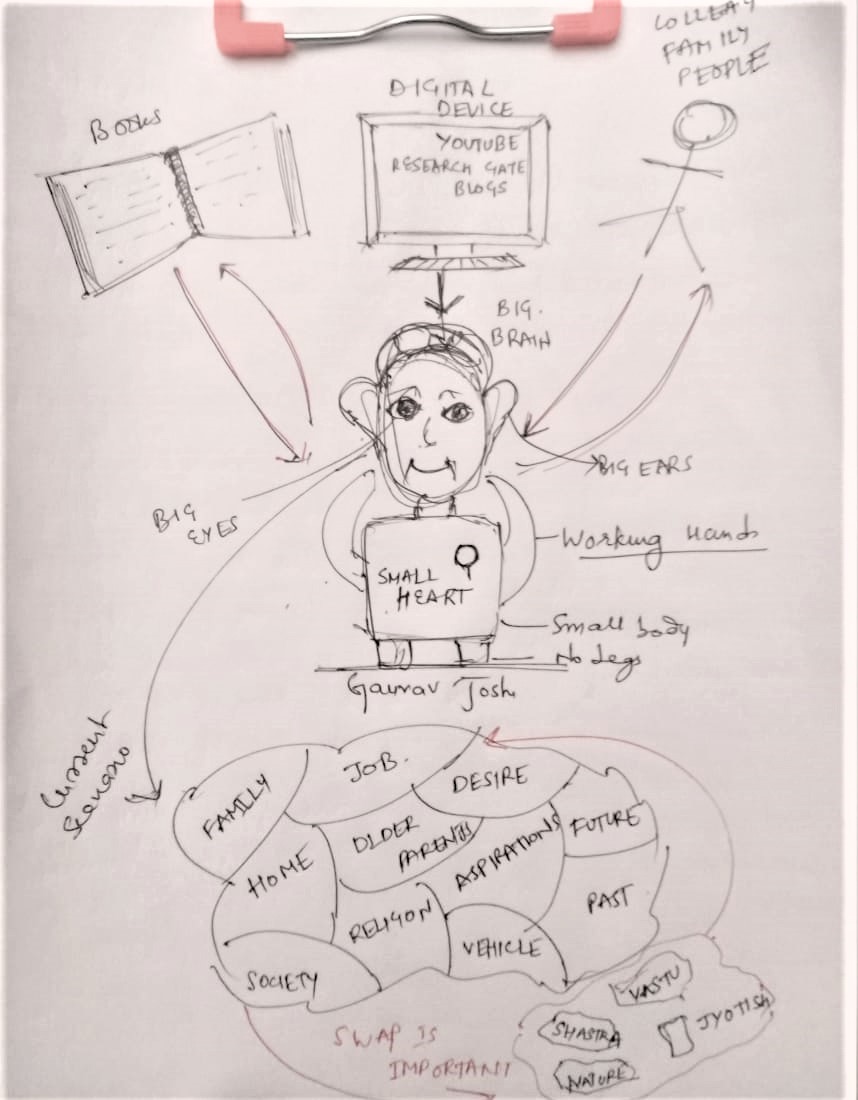
Another participant shared ‘There was a time when my head seemed to store everything but now I see the body has it’s own flow, intelligence and memory. It knows how to get in and out of different asanas on it’s own now! ’ He also noted that when he read or listened to music and chanting, it often got stored in his heart. I am able to recall the words or sounds from the heart, not the mind, he said.
A few women shared how they received and responded deeply from their heart space and wondered if they were ‘feeling too much’. This opened up a deeper discussion on society’s conditioning and expectations/ judgements thrust onto each gender. It became clear through the discussion that both men and women suffered from being discouraged from connecting to their emotions freely and openly, that often got internalised in different ways. How can we get through this? one may ask. And once again, the answer seems to be – continued awareness and reflection. A young mother in the group shared how she was connecting to a whole new side to herself and way of perceiving the world after her child was born. ‘A heightened sense of awareness after child birth is common’ the elder in the group resounded.
Another shared that he had experienced at moments that knowledge was also passed down from ancestors. ‘Sometimes you wonder how you already know something.’ ‘There seems to be a stream of knowledge from ancestors that is there if we are open to it.’ ‘Reading too much and becoming arrogant blocks this flow of knowledge’ he had observed, he said.
There were a few who touched upon integrating the knowledge, bringing in all that they receive through the senses and different channels to a focused center and strengthening areas that needed attention. After a fruitful, profound sharing of 30 minutes, we agreed that ‘experiential exploration is a way to strengthen our connection to our authentic selves and to practice embodying it.’
Sashikala Ananth concluded the session with a profound statement by J. Krishnamurti ‘ Your mind knows it’s way back home. It has traced that path a hundred times. So trust that it will find its way and focus on the Higher mind.’
We hope to continue such enquiries in the space we co-create with participants in our upcoming vAstu workshops.

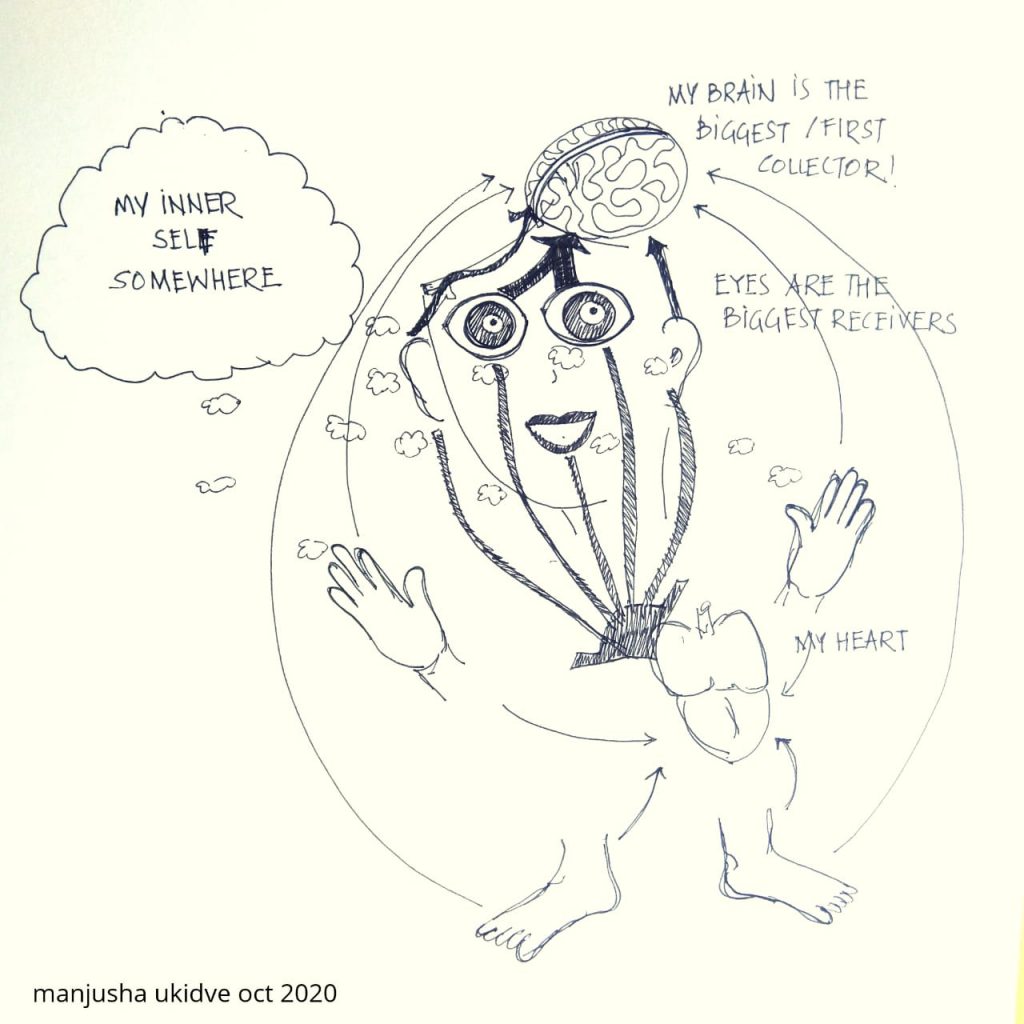
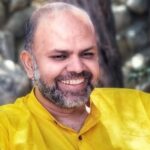 Anoop is a student of Yoga, an entrepreneur, a coach and a father of two young boys. He has led successful leadership stints in both the corporate and non-for-profit sectors. On encountering the country’s water/farmer crises at close quarters, he decided to pause and examine the impact various ‘isms’ – capitalism, colonialism, etc., were having on us as individuals, families, the society and the environment at large. This quest led him to formally engage with traditional Indic knowledge systems while also learning from the latest advances in science – about our physical and mental wellbeing, importance of body and mind work in healing trauma and the urgent need for a conscious rebuilding of family / work / social structures if we have to thrive individually and collectively. Insights, frameworks and processes gleaned from these on-going studies, an anchorage in his own personal practice and his wide-ranging experiences is what Anoop brings to facilitation/coaching spaces in Ritambhara and his various professional engagements.
Anoop is a student of Yoga, an entrepreneur, a coach and a father of two young boys. He has led successful leadership stints in both the corporate and non-for-profit sectors. On encountering the country’s water/farmer crises at close quarters, he decided to pause and examine the impact various ‘isms’ – capitalism, colonialism, etc., were having on us as individuals, families, the society and the environment at large. This quest led him to formally engage with traditional Indic knowledge systems while also learning from the latest advances in science – about our physical and mental wellbeing, importance of body and mind work in healing trauma and the urgent need for a conscious rebuilding of family / work / social structures if we have to thrive individually and collectively. Insights, frameworks and processes gleaned from these on-going studies, an anchorage in his own personal practice and his wide-ranging experiences is what Anoop brings to facilitation/coaching spaces in Ritambhara and his various professional engagements.
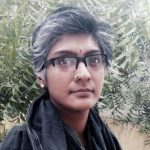 Priya is a Yoga therapist in the Krishnamacharya tradition. She adapts Reiki & energy work, Vedic chanting, life coaching & Ayurvedic practices in her healing spaces. She is committed to nurturing collectives that have the praxis of Yoga at their heart.
Priya is a Yoga therapist in the Krishnamacharya tradition. She adapts Reiki & energy work, Vedic chanting, life coaching & Ayurvedic practices in her healing spaces. She is committed to nurturing collectives that have the praxis of Yoga at their heart.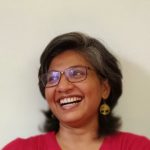 Anisha has been on an exploration to understand herself through yoga for the last 15years which led her to teaching yoga, yoga therapy and inner work through yoga.
Anisha has been on an exploration to understand herself through yoga for the last 15years which led her to teaching yoga, yoga therapy and inner work through yoga.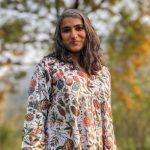 Apoorva chanced upon Yoga in her early 20s. A spark was lit within and there was no turning back. Her exploration led her to the Krishnamacharya tradition more than a decade ago. Curious about human behaviour and what drives it, she was thrilled when her search ended (and also began) when she first came upon the Yoga Sutra, which illuminated a path towards answering many questions that had been held for a long time.
Apoorva chanced upon Yoga in her early 20s. A spark was lit within and there was no turning back. Her exploration led her to the Krishnamacharya tradition more than a decade ago. Curious about human behaviour and what drives it, she was thrilled when her search ended (and also began) when she first came upon the Yoga Sutra, which illuminated a path towards answering many questions that had been held for a long time. Anita is a yoga teacher and therapist in the tradition of Sri.T.Krishnamacarya and Sri T.K.V. Desikachar, a Reiki practitioner and a Life Coach. She is also the founder of Vishoka, a center for learning Indic and energy-based frameworks for living and healing. Her deep concern for human suffering and the problems of unsustainable living kept her on the path of seeking an integrated approach to looking at life, living, learning and healing.
Anita is a yoga teacher and therapist in the tradition of Sri.T.Krishnamacarya and Sri T.K.V. Desikachar, a Reiki practitioner and a Life Coach. She is also the founder of Vishoka, a center for learning Indic and energy-based frameworks for living and healing. Her deep concern for human suffering and the problems of unsustainable living kept her on the path of seeking an integrated approach to looking at life, living, learning and healing. Ankit is a seeker in the wisdom traditions of India. The core of his work includes creating dialogic spaces where people can look within and see the connection between their inner and outer lives. Inspired by the likes of Gandhi, Aurobindo, Vivekananda and Guru Gobind his experiments in service took him back to his roots in Punjab where he is creating a community-led model of higher education which is open, inclusive and accessible for all. Ritambhara for him is a space for engaging in a community which is committed to a DHramic life. He anchors his work of learning and leadership in the Antaranga Yoga Sadhana and the humanistic wisdom of Mahabharata.
Ankit is a seeker in the wisdom traditions of India. The core of his work includes creating dialogic spaces where people can look within and see the connection between their inner and outer lives. Inspired by the likes of Gandhi, Aurobindo, Vivekananda and Guru Gobind his experiments in service took him back to his roots in Punjab where he is creating a community-led model of higher education which is open, inclusive and accessible for all. Ritambhara for him is a space for engaging in a community which is committed to a DHramic life. He anchors his work of learning and leadership in the Antaranga Yoga Sadhana and the humanistic wisdom of Mahabharata.
It was a wonderful discussion. Thanks for the summary, Chandana. And for including my sketch 🙂
Thank you Manjusha! Your sketches were an integral part of the discussion. Thank you for being a part of it. Look forward to connecting again sometime 🙂
Rich insights. Thanks for sharing.